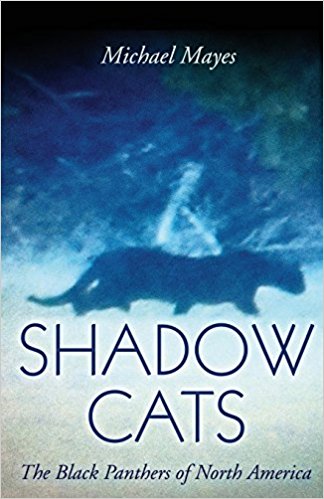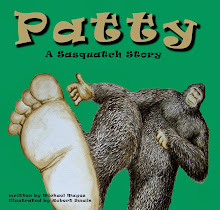Even a man who is pure of heart
And says his prayers by night,
May become a wolf when the wolfbane blooms
And the Autumn moon is bright.
The werewolf legend is likely as old as mankind itself. Tales of shape-shifting shamans, skinwalkers, and unfortunate souls who were either cursed or survived an attack by one of these beasts (only to become a monster themselves) appear in nearly every culture to have ever existed on this planet. I am sure that those versed in the science of psychology could share many theories on why this may be so. I, however, tend to believe that there is something more to such stories. Something significant – and very real to those who experienced it – must have taken place at some point; otherwise, the lore of the werewolf would not have survived for these many generations.
What sort of event could lead to the belief that a human being could be transformed into a wolf when the moon is full? Perhaps the legend has its roots in the tales of feral children found in the forests and jungles of the world long after they were presumed dead. Some of these stories are purely fictional, of course. The wolf-suckled twins Romulus and Remus who, according to legend, founded Rome, are one such example. Rudyard Kipling’s The Jungle Book, which details the rescue of the “man cub” Mowgli by a she-wolf who nursed him and raised him as her own, is another. These tales are all well and good, but is there any proof that such a thing has ever really happened? Surprisingly, the answer is yes.
Throughout history, the discovery of feral children has been extremely rare, but it has happened. The previously mentioned Mowgli was inspired by the strange tale of Dina Sanichar who was raised by wolves in India’s Uttar Pradesh jungle. Found by hunters in a wolf’s den in 1867, Sanichar (named by missionaries who later took him in) walked on all fours, would only accept raw meat as food, gnawed on bones to sharpen his teeth, and could not communicate verbally other than producing decidedly wolf-like grunts, barks, and howls. Eventually, Sanichar did learn to walk upright and dress himself; however, he never did learn language and died at the age of 35. Another real-life example of this phenomenon is “Peter the Wild Boy” who was discovered in the forests of Germany in 1725. Believed to have been abandoned by his parents, the boy was estimated to be 11 years old when found. He was unable to speak and loathed wearing clothes. Within a year of his rescue, Peter was shipped off to London where he became the “human pet” of King George I. The wild boy bounded about the King’s court on all fours, which the courtiers of Kensington Palace initially found quite entertaining. It was widely believed that the boy had been raised by wolves or bears due to his behavior. Eventually, the King tired of Peter and shipped him off to a farm in Herfordshire where he was forced to wear a collar that read: “Peter the Wild Man of Hanover. Whoever will bring him to Mr. Fenn at Berhamsted shall be paid for their trouble.” Peter died in 1785 and was buried in the cemetery of St. Mary’s at Northchurch. There are numerous other examples of feral children that were suspected to have been raised by animals that could be cited here, but I trust the point has been made. What many do not realize is that this very scenario may have once played out in the deserts of west Texas.
A nearly forgotten historical fact is that a group of English people once established a small settlement called Delores on the banks of the Devil’s River (part of the Rio Grande drainage basin) in southwest Texas. The community was short-lived as most of the settlers were killed by Comanches. One white couple (who had a rather colorful history of their own), who lived on the extreme edges of the settlement, survived and carried on. One day in 1835, the settler husband frantically rode up to a homestead owned by Mexican goat ranchers and asked for help as his wife was having a baby and was in great distress. According to legend, a storm was brewing and the Mexican couple wanted to wait it out before mounting up and going to the aid of the mother to be. The settler insisted they leave immediately as his wife’s need was great. The Mexican couple relented and they started toward the settler’s home on the Devil’s River. The party had hardly started out when the settler was struck by lightning and killed. This event gave the rancheros pause and they decided to wait until morning to make the trek. While understandable, the decision of the Mexican couple proved disastrous for the female settler. Her lifeless body was found beneath an open brush arbor the next morning. There were clear signs the woman had died during childbirth, yet no child could be found. The couple hastily searched for the infant but found only lobo tracks in the vicinity. The couple assumed that wolves had come upon the scene and devoured the infant. Why the lobos had left the body of the mother unmolested was puzzling to the pair, but they proceeded with burying the unfortunate woman and then made their way home.
Ten years later, in 1845, a boy living at San Felipe Springs (now called Del Rio) reported that he had witnessed a pack of wolves attacking a herd of goats. With them, he claimed, was a long-haired creature that resembled a naked girl. The boy was chastised greatly, but the story – as good tales are apt to do – spread throughout the region. Roughly a year later, a Mexican woman at San Felipe declared she had watched two big lobos and a naked girl ravenously devouring a freshly killed goat. The woman claimed to have gotten very close to this odd trio before they took notice of her and bolted. The naked girl, at first, ran on all fours but eventually rose up and ran on two feet. The woman reported she was positive as to what she had seen and that the child was definitely keeping company with the two wolves.
Again, the story spread like wildfire, but this time the memory of the unfortunate settler woman who had died during childbirth, but whose baby was never found, was recalled. Could the feral “lobo girl” be the missing child, now 10 years old? Other stories related by local Native Americans – previously dismissed as superstitious drivel by the Anglo settlers - were also recalled. The Indians had claimed more than once to have located barefoot human tracks and handprints on the sandy areas along the river. The human spoor was always found among wolf tracks. Could it be? Was such a thing even possible? It was decided by the settlers that they had to find the wolf or lobo girl and rescue her. The posse managed to pick up the wolf pack’s trail quickly and cornered the girl in a small canyon. With the feral girl was a big lobo that fled when the child wedged herself into a crevice in the canyon wall. The girl at first cowered in fear before her tormentors, but then her countenance grew fierce. She spat, hissed, and growled at the men as they approached and bit and clawed them once they took a hold of her. Once captured, the girl began to produce a “pitiful, frightful, unearthly sound…resembling both the scream of a woman and the howl of a lobo, but being neither.” Distracted by these terrifying sounds, the vaqueros nearly failed to spy a huge he-wolf, likely the pack alpha, creeping up on the group. Fortunately for the posse, one man turned in time to see the wolf as it was preparing to spring and shot it dead with his pistol. At this, the lobo girl fainted.
The men bound the girl securely and stepped back to examine her more closely. According to the men, she was “excessively hairy, but breasts of beautiful curvature and other features showed that she was a normally formed human female. Her hands and arms were muscled in an extraordinary manner but were not ill proportioned.” The party rode to the nearest ranch where the girl was untied and placed in an isolated room for the night. The men attempted to communicate with her, offered her food, coverings for her body, and water but she reacted only with distrust and fear. The terrified girl backed herself into the farthest corner of the room where she cowered pitifully. The men decided, for the time being at least, to leave the poor creature alone. The door was closed and locked and the men nailed a thick board across the room’s only window. Things remained quiet…until darkness fell.
Once the sun set, the wolf girl began to emit screaming howls that were terrible to hear. Soon, her cries were answered by the long deep howls of wolves in the distance. The men’s eyes widened and fear began to creep into their souls as the cries of the lobos – seemingly approaching the ranch house from all sides - grew louder and more menacing. It wasn’t long before they were all howling in unison, “a bass-throated chorus of ferocity” the likes of which the rough and tumble vaqueros had never before heard. To the men, it seemed all of the lobos of the western world were gathering outside of the house. These rancheros, all of whom had lived their entire lives in the region, had never heard anything like it, “either from such a number of wolves now assembling or in the sullen, doom-like quality of the long, deep howling.” Back and forth the calls went. One of the men later recalled, “They (the wolves) would go silent as if waiting from some answer, and the wild girl in the dark room there would answer back with her unearthly, howling scream, a voice neither of woman nor of beast.”
After a while, exactly how long no one could say for sure, the pack made for the corrals and pens, attacking goats, cows, and horses. The screams of the livestock broke the spell the terrified men were under and they sprang into action in an effort to save the animals. Ordinarily, the rancheros did not fear wolves; however, on this night, the men stayed tightly packed together as they sought to run the predators off by shooting and shouting into the darkness. Eventually, the wolves retreated. When the men returned to the ranch house, they discovered that someone, or something, had managed to wrench the plank nailed across the window of the room where the lobo girl had been incarcerated loose. She was gone, presumably reunited with her pack. Not a single howl was heard for the rest of the night and, somewhat curiously, wolf sightings in the general area became exceptionally rare over the following years.
Six years would pass before the wolf girl was seen one final time. The year was 1852; gold had been discovered in California and travel westward had greatly increased necessitating the need for a wagon trail or road that was better watered than the Chihuahua Trail currently used by travelers heading to and/or through El Paso. A group of scouts seeking such a route came upon the lobo girl at a spot on the Rio Grande where it takes a sharp bend far above the mouth of the Devil’s River. At close range, the men caught sight of the hair-covered, naked young woman (some versions of the tale say she was holding or nursing two young wolf pups). Once she caught sight of the men, she sprang away in a flash, “dashing into the breaks at a rate no horse could follow.” The slack-jawed men sat stunned upon their mounts, knowing they had just glimpsed none other than the lobo girl of the Devil’s River.
As far as I can tell, the lobo girl was never seen again…at least not by white or Mexican settlers who would have left some record of the account. It is rumored that some of the handful of Apaches left in the region caught sight of her from time to time, but it cannot be confirmed. As years passed, the memory of the lobo girl faded. What happened to her will likely never be known. Some would later claim the entire story had been fabricated as it was simply not possible; however, the vaqueros, rancheros, and scouts who did see her never recanted their stories and stuck to their guns until the day they died.
Texas does have werewolf legends of the more classic shapeshifting type: The Beast of Bear Creek, The Converse Werewolf, and the Cajun Rougarou all come to mind. To me, however, the tale of the lobo girl of the Devil’s River may be the strangest and most unsettling of them all. If scenarios where feral children raised by animals in other parts of the world have proven to be true, why could it not also have happened in the arid deserts and scrubland of frontier west Texas? Was she a true werewolf? No. To the rancheros that encountered the lobo girl and her fiercely protective pack, however, it mattered little. She was wolf enough to them.
West Texas remains sparsely populated to this very day. It is a wild and lonesome country where nature still reigns supreme. It is a region where all manner of strange goings on continue to be reported; a place where it is easier to believe in such things as the lobo girl of the Devil’s River than it might be in other locales. Should you ever find yourself there, alone on the night of a full moon, you might still hear the howl of a wayward wolf or coyote and recall the legend of the lobo girl. On such a night, even though you do not believe in such things, another stanza of the famous werewolf poem might come to mind:
To hear her cry in the dead of night
And strain to see the terrible sight,
Is to know the meaning of dreadful fright.
Sleep well.
Sources:
Dobie, J. F., & Boatright, M. C. (1966). Straight Texas. Southern Methodist University Press.
Sawyer, B. J. (2017, November 22). The Devils River is an Off-Grid Paradise for Adventurers. Wide Open Country. Retrieved July 21, 2022, from https://www.wideopencountry.com/devils-river-off-grid-rugged-texas-paradise/
Lee, A. (2021, August 12). Dina Sanichar – a wild Indian feral child who was raised by wolves. Mysteriesrunsolved. Retrieved July 21, 2022, from https://mysteriesrunsolved.com/2020/04/dina-sanichar-real-mowgli.html
Lane, M. (2011, August 8). Who was peter the wild boy? BBC News. Retrieved July 21, 2022, from https://www.bbc.com/news/magazine-14215171
Zimmerman, J. (2014, March 24). Wolf Boys and girls. Jean Zimmerman. Retrieved July 21, 2022, from https://jeanzimmerman.com/bio/savage-girl/wolf-boys-and-girls/

















